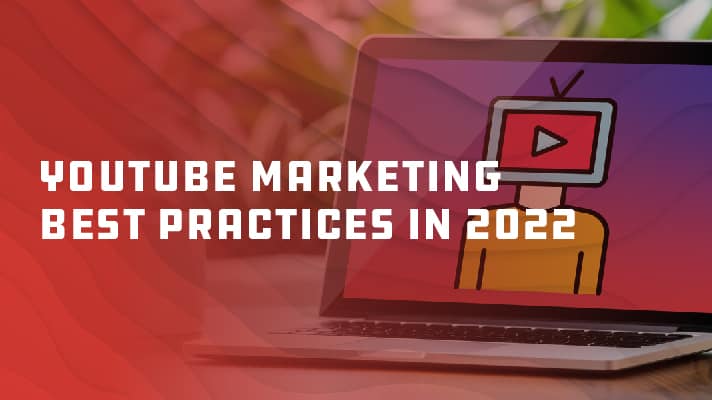Each year, we hear the same trends in marketing. One of the most prominent statements is, “People are watching more videos online than ever before.” Once again, this holds true as the amount of online video content consumed has almost doubled since 2018. These numbers, combined with the dominance of short-form video apps like TikTok, YouTube Shorts, and Instagram Reels, mean marketers will continue to prioritize video content for the foreseeable future.
Curating your video content is more than just filming, editing, and posting. Your video content needs to be treated just like any other content piece.
Let’s break down the types of video content, audience intent when watching videos, optimizing for search, and how to start better using YouTube as a social media platform to host your video content.
YouTube Fast Facts
YouTube has 2.6 billion users (2022)
There are 240 million active U.S. YouTube users.
95% of 18-29 year-olds and 91% of 30-49 year-olds in the U.S. use YouTube.
1 in 3 baby boomers go on YouTube to learn more about a product or service.
What is YouTube Marketing?
YouTube is a platform owned and operated by Google. Which means you should be treating it similarly to Google search. Think of YouTube as a search engine and a hosting platform. To market your business on YouTube, you need to produce content that gives value to your audience. Additionally, you need to make sure the right people find your videos by optimizing your content for the YouTube algorithm, just like you would do for Google SEO.
Before You Publish Your Own Video Content
Research Your Competition
If your goal is to grow YouTube as one of your primary social channels for audience engagement, you’ll want to pull a full report of your competitors and industry inspirations. You’ll want to identify a ‘north star’ to look at as inspiration for your channel. Pick someone in your industry, who may not necessarily be a competitor, and analyze their channel and content as well.
Competitor analysis includes:
- Subscriber count
- Average views per video
- Frequency of posting
- Overall video quality
- Video comments
- Video topics, types, and purpose
Learn From Your Favorite Channels
Besides pulling competitor reports, you should also learn from your favorite brands and their social media profiles. These don’t have to be channels related to your industry. People work with people. No matter the industry, service, or product, there are people behind every brand that influence the company. We all have our favorite channels and profiles we follow. Take a look at your own favorites for inspiration on visual styles and types of video content on YouTube.
When exploring your favorite channels, pay attention to:
- Video thumbnails
- Channel art
- How creators link to posts
- How creators edit videos, including typography, audio, and special effects
There are even entire channels devoted to video editing and YouTube growth. You don’t have to be a professional video editor to create engaging, high-quality videos for your business.
Jenni’s YouTube Channel Recommendations:
Shutterstock Tutorials provides tips, tricks, and tutorials for all types of creatives. These videos feature great video thumbnails and examples of incorporating text captions and overlays within the video.
If your business utilizes Adobe programs, follow the Adobe YouTube channel. Epxlore tips and tricks for all of Adobe programs, in addition to in-depth tutorials of program updates.
Aidin Robbins is a filmmaker who uses a style very different from my own, including equipment, color grading styles, and video editing workflows. I get inspiration for sound design and unique camera shots.
Mark Denney is a landscape photographer. Through watching his videos, I have learned a lot about natural lighting and editing in Adobe Lightroom. While Mark’s focus is landscape photography, a lot of his tips can be applied to any environment and subject.
While Vox media’s focus is on providing in-depth information behind major headlines, its media team uses a variety of video styles to tell stories. Find inspiration for thumbnails, use of text and icons in video, and interview formats.
Basics of YouTube Video Marketing
Optimize your videos to get views
If you’re familiar with SEO and Google’s algorithm, YouTube works in a similar way with one key difference: Personalization. When you search for a phrase on Google, you’re served roughly the same website results as others. These results can vary based on your location.
However, when YouTube shows you search results, the algorithm takes into account your watch history and the types of videos you like to watch, in addition to the video popularity and keywords. This is why no two users’ YouTube homepage or search results will be 100% alike.
But optimizing your videos for SEO is still important to get your videos found in search!
Pro Tip: Add your keywords to your video
You should have one main keyword and a few additional ones for each video. Here’s where to add them:
- Video title (main keyword)
- Video description (main keyword + 1-2 related keywords)
- Use the main keyword within the first 3 sentences
Create a Detailed Video Description
Each video’s description should have a unique section with a few sentences describing its content. It’s important each video description includes links to your website or social channels that relate to the topics discussed in the video.
Always Add a Thumbnail!
Always upload a customized video thumbnail, even if it is just a simple video title page. YouTube will automatically choose a frame in your video as a thumbnail, the last thing you want is for it to be a still image when your subject is mid-sentence and making a funny face.
Try to get creative! What counts as a good YouTube thumbnail will vary depending on your audience. When in doubt, keep it simple.
Current thumbnail specs are a 16:9 format with a minimum size of 1280 x 720 pixels.
Use Timestamps in Long Format Video
YouTube timestamps are like breaking your video into chapters. It allows viewers to skip around to the sections they’re most interested in. It is not required for all videos to have timestamps. But, we recommend that in videos over 3 minutes or interview videos, utilize timestamps to increase the amount of time viewers spend watching your video.
YouTube Shorts or Traditional Videos?
If there’s one thing we can learn from the success of platforms like TikTok and Instagram Reels, it’s this: Video content doesn’t have to be lengthy to generate engagement.
According to HubSpot’s 2022 Marketing Industry Survey, short-form video has the highest ROI out of all social media content. That’s why 30% of marketers prioritized short-form videos in their marketing budget this year.
Maybe it’s time to consider publishing YouTube Shorts!
What are YouTube Shorts?
YouTube Shorts is Google’s answer to TikTok. Unlike regular YouTube uploads, YouTube Shorts are capped at 60 seconds maximum. This allowed creators to create quick, daily videos that resonate with their audience on a personal level.
Before globally launching in July of 2021, YouTube Shorts amassed billions of daily views in its beta version. Just a year later in 2022, the short-form video sharing platform cracked the 5-trillion mark in overall views.
The main advantage is it taps into YouTube’s already-massive user base and reliable engagement performance. It’s even versatile enough that professional content creators share their videos on Shorts.
But remember! YouTube Shorts are not TikToks! You’ll find the purpose and audience can be different than TikTok. If you are looking for a second place to upload the content you have already published on TikTok, YouTube Shorts may not be the place.
YouTube Short Features:
- Automatically add captions
- Speed controls
- A multiple segment camera
- Background music and song choice
- Color correction options
- Uploading direct from gallery
- Easy filters and effects
- Sounds and text overlays
- Trim videos
Why Use Shorts?
Shorts are a great way to repurpose your content! Video content has become an increasingly popular medium to share stories and connect with a broader audience. It has also become an integral part of many companies’ social media marketing strategy. You can make your YouTube Shorts content go even further by repurposing it.
Traditional YouTube Videos
Don’t abandon posting longer format videos on YouTube. As a video hosting platform, YouTube should still be used to host all video content that is embedded in your website. Long-format videos continue to perform well and hold the audience’s attention.
Primary Types of Long Format Videos:
Informative: Instructive and educational content
Demonstration: A practical demonstration of how something works
Explainer: Describe your company’s product or service
Within each of these types of videos, determine the best video style to meet the topic and purpose. This includes using vlogs, interviews, stop motion, animation, webinars, etc.
YouTube prefers high-definition videos. The lowest recommended video resolution is 1280×720 with a 16:9 aspect ratio and a resolution of at least 640×480 for a video with a 4:3 aspect ratio.
YouTube prefers the original, 1080p HD broadcast format for uploads. While 4K is a standard format in 2022, it is still the industry standard to export videos in 1080p. Regardless of file format, its recommended video frame rates are set at 24 or 30 fps.
MPEG-2
Audio codec: MPEG Layer II or Dolby AC-3
Audio bitrate: 128 kbps or better
MPEG-4
Video codec: H.264
Audio codec: AAC
Audio bitrate: 128 kbps or better
Note: If you are unable to encode your videos using the preferred specifications, you can still submit your video in .WMV, .AVI, .MOV and .FLV formats.
Video can provide a more personable way to connect with your audience while being easy to digest, entertaining, and engaging. Videos can give a potentially huge return on investment by driving sales and conversions while boosting your brand image.
While you don’t have to be a professional videographer to create meaningful videos for your brand, you might not know how to start incorporating video into your marketing strategy. Connect with our team to chat about videos, marketing, and how we can help your business start producing engaging and effective videos for your brand.









